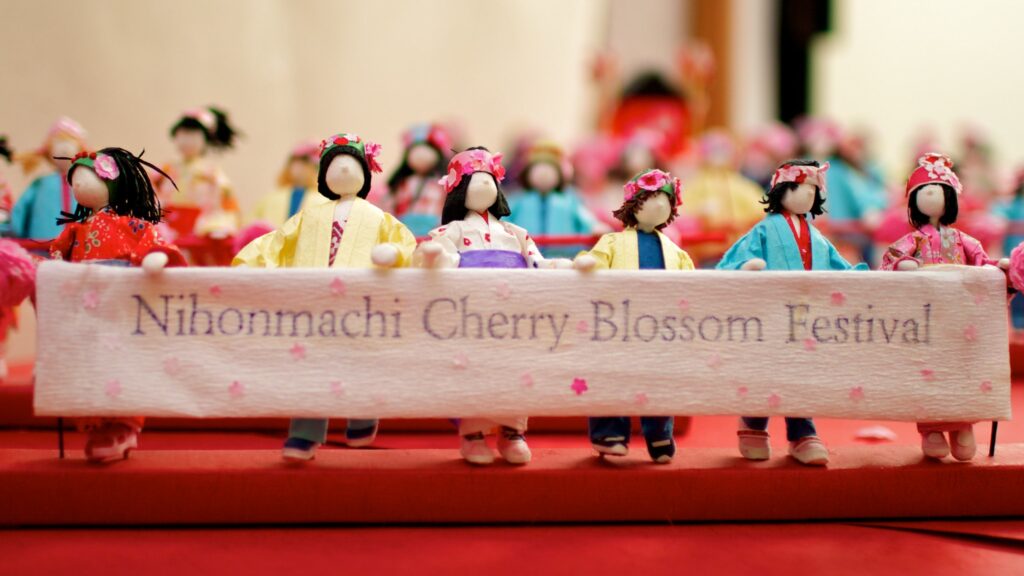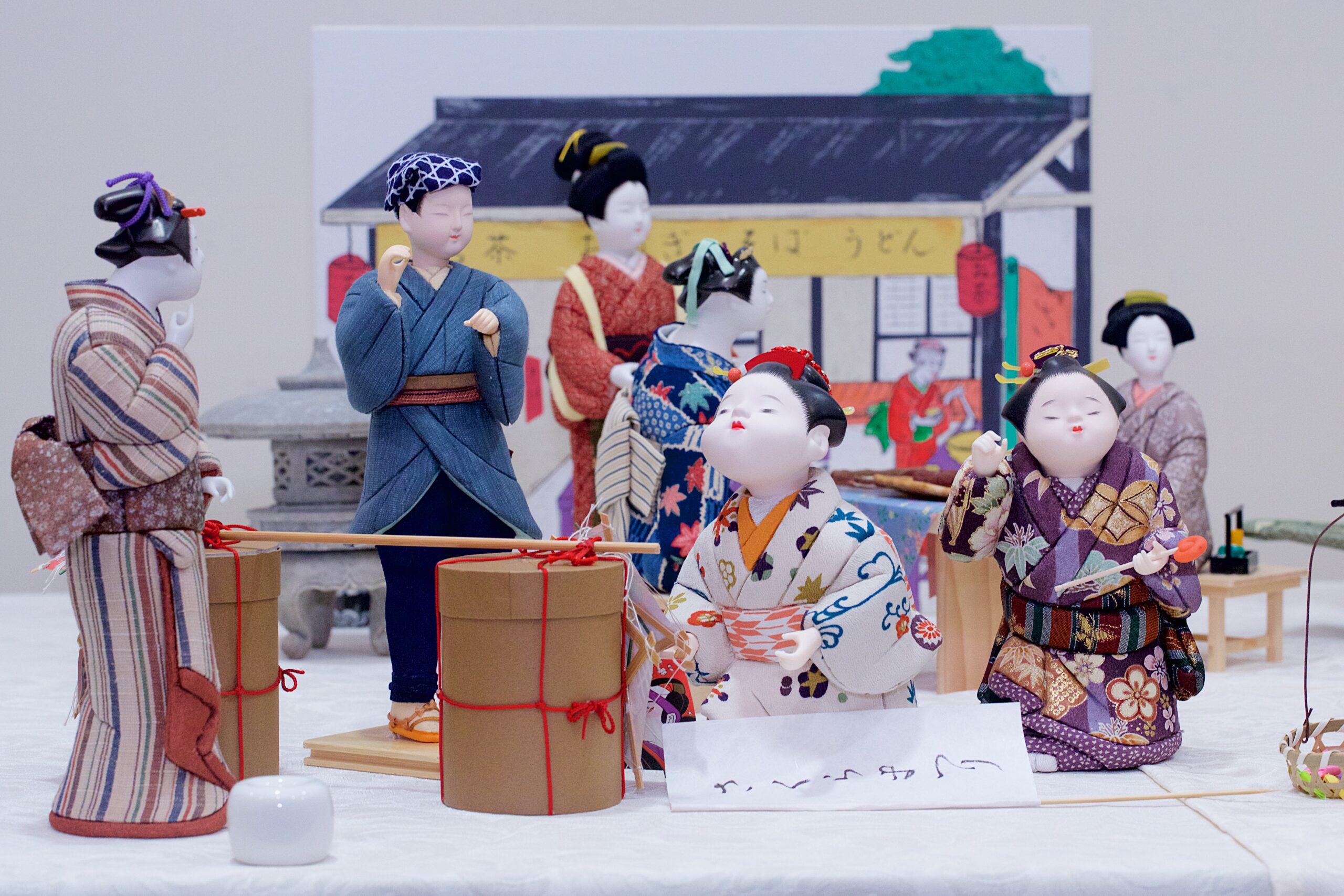Washi Ningyo, Mataro Dolls
Washi Ningyo 和紙人形 (3D Japanese Paper Dolls)

Favored by girls in Japan since the early 1500’s, Washi Ningyo (3D Japanese paper dolls) originated from a paper doll called Anesama Ningyo (flat dolls). You can learn Japanese culture and history as you make the doll by hand, using special Japanese Washi paper and cotton. There is an indescribable beauty in the doll making process; it can take about two to three hours to make a simple piece. Many of these intricate dolls are designed by the students and teachers, who were inspired by Japanese traditions and cultures, as shown in Ukiyoe (woodblock prints) and Theater arts such as Noh, Kabuki, and Bunraku (including photos, paintings, and drawings).
Washi Ningyo has been exhibited at the Festival for over 30 years. In celebration of the Cherry Blossom Festival, a washi doll version of the very colorful and joyous Grand Parade was created. This class project took several years to make, and it will continue to expand as new pieces are added. The Washi Ningyo Japanese Paper Dolls Group will display their beautiful exhibit at the Japanese Cultural and Community Center of Northern California (JCCCNC/the Center).
Classes are taught by instructors Rochelle Lum and Yurie Nakamura at the Center. In addition to the traditional art, Rochelle and Yurie make their own special creative design dolls. Rochelle’s specialty is animal dolls in Japanese lifestyle scenes, and Yurie’s specialty is wall hanging dolls on decorative landscapes. Yurie and Rochelle shared special washi ningyo dolls named Pray and Hope that they made in response to shelter-in-place and the start of the pandemic in 2020.
Mataro Dolls 真多呂人形 (Kimekomi Ningyo)

The Mataro Doll is a type of Kimekomi Ningyo (wooden dolls dressed in kimono). These dolls were a product of the Edo period and have a history of over 300 years. Originally, the body of the kimekomi doll was made out of wood with grooves carved into it. The edges of carefully cut pieces of cloth were inserted into grooves and held in place with rice glue. This method of dressing the doll is traditionally called Kimekomi.Â
Today, the doll bodies are not carved out of wood. Mataro Kanabayashi I (1897 – 1984), founder of the Mataro Doll Craft Academy, developed a unique method of molding the base form of a doll from paulownia (Japanese Kiri-no-ki) sawdust and glue, naming his creation the Mataro Doll. Mataro I utilized the traditional techniques of doll making to create realistic dolls for manufacturing. He also believed that the most elegant era in Japan’s history was none other than the Heian period, and he endeavored to create Kimekomi dolls to represent “the world of elegant beauty of that era.â€
There is no scheduled programming for the Mataro Dolls in the 2024 Festival, but we hope to bring this beautiful doll display back to a future Festival.
Members of the San Francisco-East Bay Miyabikai will be available to answer any questions regarding the exhibit and Kimekomi dolls. The exhibit will include the doll display, a doll making demonstration, and a sale of craft items made by San Francisco-East Bay Miyabikai members.
